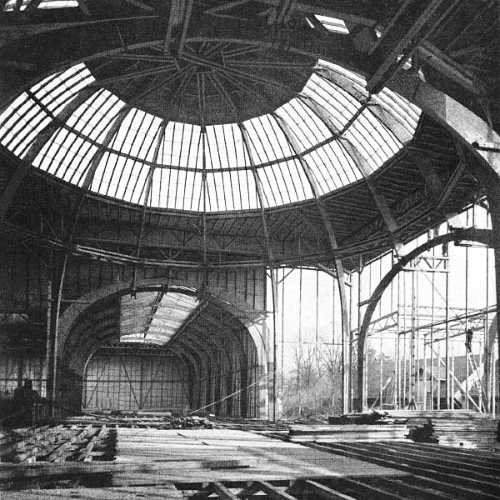|
Constructing a Material: Early glue-laminated Timber Structures in Switzerland (1908-1917) |
R. Haddadi 2017 - 2023 |

Food Industry Hall by Terner & Chopard, Third National Swiss Exposition, Bern (1914)
Only two years after the German master carpenter Otto Hetzer's technological invention for a curved glue-laminated timber component in 1906, the Swiss engineers Bernhard Terner (1875-1960) and Charles Chopard (1879-1954) acquired the patent and the exclusive right in Switzerland. During the following 24 years, they developed many extraordinary and internationally acknowledged timber structures and established an early high-profile timber engineering focus in Switzerland. Although there is a rising interest in the history of timber construction, mainly due to new fabrication possibilities in the timber industry, the inherent design and construction practice of early glulam is poorly understood. Therefore, after establishing a complete account of the early glulam structures in Switzerland, the project aims to clarify the contemporary design and construction practice of glulam structures, to understand the involvement of different institutions and their interrelations in these processes, as well as to reveal possible cultural agendas behind their establishment.
To reach this goal, a theoretical framework will be developed on the basis of six different case studies from different years, functions and clients. Using original documents from local archives together with information such as technical reports from the building's life time and in-situ observations, both planning and construction processes as well as the performance of these structures but also the entanglement of the involved institutions will be determined.
This research will provide a profound understanding of the first glulam buildings and their practices allowing a better understanding of the implicit construction philosophy we are using today. It will make a substantial contribution to the cultural and technical history of engineering in Switzerland, and will clarify their role in the national and international context.
last modified 16.10.2019